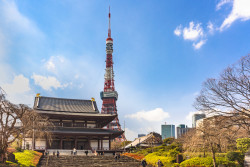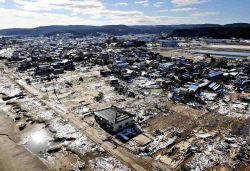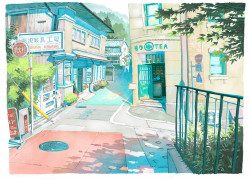Irregular hours are a fact of life for a dancer. Metropolis’ Skype call to Yuichi Yokoi finds the leader of Osaka street dance group Wrecking Crew Orchestra about to begin rehearsal at 11 in the evening.
“We were all once dance instructors; usually we worked during daytime,” Yokoi explains with a laugh. “So the only time we had to practice was at night after work. It’s a habit we can’t seem to drop.”
The eight members of Wrecking Crew are rehearsing what may be their biggest show yet: A 10-day residency at Tokyo’s Zepp Blue Theater.
“We wanted to test our limits of expression,” says Yokoi of the production, which employs sophisticated projection mapping. “With Doodlin’, we go beyond street dance to create an entertainment spectacle. We’ve used projection mapping in our performances before, but we wanted to try something new in terms of integrating technology with street dance.”
Doodlin’ melds street dance with Japanese hi-tech, taking the integration of projection mapping with performance art to a new level. Working with visual director Takehito Suzuki and a pack of costume and stage designers, Wrecking Crew Orchestra employs what’s called a “see-through screen” that allows them to seamlessly blend the dancing and visuals.
Yokoi says the title Doodlin’ stands for graffiti. “The theme is based on childhood,” he offers. “Kids have a limitless imagination. For example, if you have kids draw a cat, but they don’t do a very good job, the cat’s ears may look like mountains. Then they draw a sky as background, and what was supposed to be a cat becomes a landscape. That’s the idea of Doodlin’—images transform before your eyes into something completely unexpected. When we become adults, our freedom of imagination gets hemmed in by social expectations and common sense. With Doodlin’, we want people to recall the freedom of their childhood. We hope to inspire people to open their minds.”
After decades as a dancer and stints representing Japan at overseas events, Yokoi speaks with the voice of someone who’s had time to consider the meaning of his life’s calling. “It has to be a conversation between the dancers and the audience,” he believes. “Dance isn’t just a tool to entertain—but also to tell a story.”
When they go abroad, Wrecking Crew find themselves in the intriguing position of representing Japan via an art form that began on the streets of the United States. “Street dance isn’t Japanese culture, so for us to represent it to Myanmar people was a bit strange,” he recalls forthrightly. “[The] Japanese first imitated American culture, but then we made it our own over time. So we tried to bring that to Myanmar. It was a powerful experience.”
What makes Japanese street dance unique? “[The] Japanese are subtle,” he says, pondering a good answer. “And precise. We’re able to take advantage of that for performances that, for example, involve projection mapping. We try to bring those aspects of Japanese culture to street dance; and Japanese hi-tech—mixing that with street art.”
Rather than finding overseas habits strange, Yokoi says it’s the local response he finds odd upon returning to Japan. “Japanese people are very shy—they’re always checking other audience members out before they decide how to respond,” he responds. “Nearby Asian peoples are more open. So rather than finding other countries strange, when I get back, I find Japan different. I wish Japanese would learn how to enjoy themselves more easily, and not be so uptight.”
While amateur dance forms from salsa to ballroom to Jamaican-style twerking are wildly popular here, dance at the professional level is still a tiny community divided into factions from street dance to ballet to butoh.
Japan needs someone who can unite dance fans, and in Yokoi they may have the right person. Whether it’s in front of audiences in big Japanese cities, or on international tour, what comes through from Yokoi is that he enjoys being on stage at least as much as his fans take pleasure in watching him.
“It’s all I know,” he concludes. “I’ve been dancing professionally half my life. It’s also the area where I express myself best. And it provides a way to interact with people. I even met my wife through dance—and the members of Wrecking Crew, too. More than art, for us dance is a communication tool.”
Zepp Blue Theater Roppongi, April 3-12. http://wreckingcreworchestra.com







